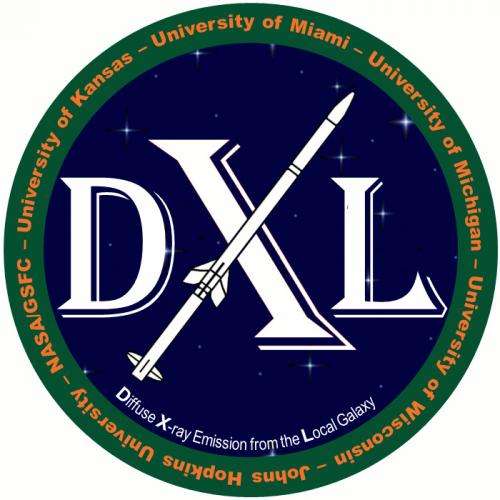DXL mission logo. Credit: University of Miami
NASA will launch an astrophysics mission to study the Diffuse X-ray emission from the Local galaxy (DXL) December 9 from the White Sands Missile Range in New Mexico. The goal of this flight is to identify how much of that diffuse x-ray emission comes from our solar system from the solar wind charge exchange process, and how much comes from outside our solar system from hot interstellar plasmas located in interstellar space. The payload incorporates an upgraded University of Wisconsin Aerobee IV instrument (flown on several Aerobee IV rockets from 1973 through 1980) and a prototype wide field-of-view soft x-ray camera.
The secondary payload STORM is the first wide field-of-view, solar wind charge exchange, soft X-ray imager for heliophysics applications. The instrument uses a new soft X-ray focusing technology called micropore reflectors (lobster-eye optics) which will fly for the first time on the sounding rocket instrument. Storm was built at Goddard Space Flight Center through the IRAD program.
The payload is scheduled to be launched at 10 p.m. MST, December 9 (0700 GMT, December 10), on a NASA Black Brant IX sounding rocket. The 55-foot tall rocket is projected to carry the payload to an altitude of 160 miles. The payload, weighing nearly 1,357 pounds, will be recovered.
The principal investigator for this mission is Massimiliano Galeazzi from the University of Miami.
More information: For more information on the DXL, go to: www.physics.miami.edu/~galeazzi/x-rays/dxl.html
Provided by NASA






















